If you own an aquarium or a fish tank, you’d be aware of the potential threats to your aquatic creatures. One of those threats includes the formation of algae. It can not only pollute the aquatic environment but also make it unhealthy for your fish and plants to thrive. Hence to combat the issue, most people invest in algae eaters.
In simplest terms, algae eaters are a group of fish, invertebrates, and other aquatic creatures that primarily feed on algae. Algae is a common problem in aquariums, and it can grow quickly and overtake the tank if not controlled. Algae eaters help to keep the aquarium clean and healthy by consuming algae as their primary food source.
Disclosure: This article contains affiliate links. When you follow a link to purchase the products, I sometime earn a commission, at no additional cost to you. Read my full disclosure here.
Types of Algae Eaters for Freshwater Aquariums
There are many different types of algae eaters, including fish such as Siamese Algae Eaters, Otocinclus Catfish, and Bristlenose Plecos, and invertebrates such as Amano Shrimp and Nerite Snails. Some algae eaters are more effective at controlling certain types of algae than others, so it’s essential to choose the right type of algae eater for the specific type of algae in your aquarium.
The three most common types of algae eaters for freshwater aquariums include the following:
- Siamese Algae Eater
This fish is known for its ability to control and eat different types of algae, including black beard algae and green algae. It is an active fish and can be kept in groups of five or more in a tank of at least 20 gallons. Siamese Algae Eaters can grow up to 6 inches in length and require a balanced diet that includes algae-based foods and live or frozen foods.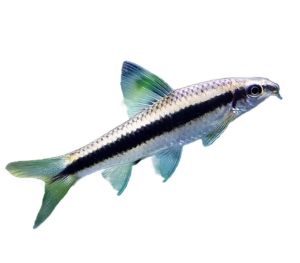
- Otocinclus Catfish
This small catfish is popular for its ability to control algae and is often recommended for small aquariums. It grows up to 2 inches in length and should be kept in groups of at least five in a tank of at least 10 gallons. Otocinclus Catfish primarily feed on algae but should also be supplemented with algae-based foods and live or frozen foods.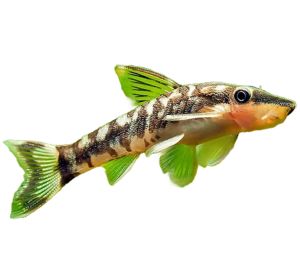
- Amano Shrimp
This invertebrate is known for its ability to control and eat different types of algae, including green algae and hair algae. Amano Shrimp are peaceful and can be kept in groups of five or more in a tank of at least 10 gallons. They can grow up to 2 inches in length and should be fed a balanced diet that includes algae-based foods and live or frozen foods.
Significance of Algae Eaters in Freshwater Aquariums
- Control Algae Growth
Algae is a common problem in aquariums, and it can grow quickly and overtake the tank. Algae eaters can help control algae growth by consuming it as their primary food source.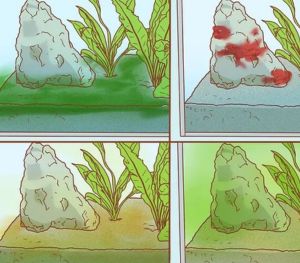
- Promote a Healthy Environment
Algae eaters also help to promote a healthy environment for fish and other aquatic life in the aquarium by reducing the amount of waste and excess nutrients in the water.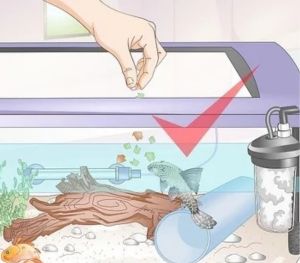
- Reduce Maintenance
With the help of algae eaters, aquarium owners can reduce the frequency of aquarium cleaning and water changes, making maintenance easier.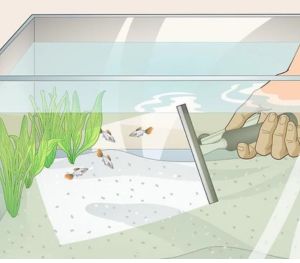
- Aesthetic Appeal
Algae eaters can enhance the visual appeal of an aquarium by cleaning the tank and creating a more natural environment for fish and other aquatic life.
- Increased Longevity
With the help of algae eaters, aquarium owners can improve the longevity of their fish and other aquatic life by providing a healthier and more balanced environment.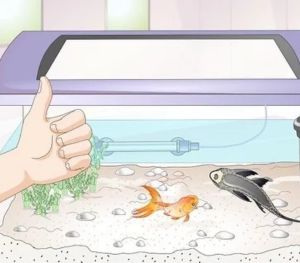
Feeding and Caring for Algae Eaters in Freshwater Aquariums
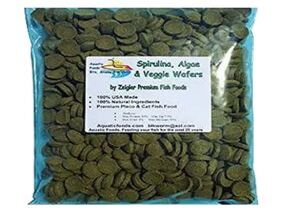
Quick view on Amazon
Available in: Australia, Canada, UK and US
Algae eaters should be provided with a varied diet that includes algae-based foods. These can include algae wafers, spirulina flakes, and frozen or live algae. Moreover, many algae eaters will also enjoy fresh vegetables, such as zucchini, cucumber, and spinach. These should be blanched and added to the tank as a supplement to their regular diet.
Besides that, some algae eaters, such as catfish, may also require high-quality protein in their diet. This can be provided through frozen or live foods such as bloodworms or brine shrimp. In addition to that, you can care for the algae eaters by maintaining a clean and well-filtered aquarium. Regular water changes and monitoring of water parameters such as ammonia, nitrite, and nitrate can be fruitful.
Also, some algae eaters can be aggressive towards other fish, so it’s important to choose tankmates carefully. Research the compatibility of different species before adding them to the tank. Furthermore, providing hiding places in the aquarium, such as caves and plants, can help reduce stress and provide a more natural environment for algae eaters.
Conclusion
All in all, algae eaters can make a great addition to a freshwater aquarium and provide many benefits, including controlling algae growth and improving fish health. By providing a balanced diet, maintaining a clean and well-filtered aquarium, and providing appropriate care, you can ensure that your algae eaters thrive in their environment.



